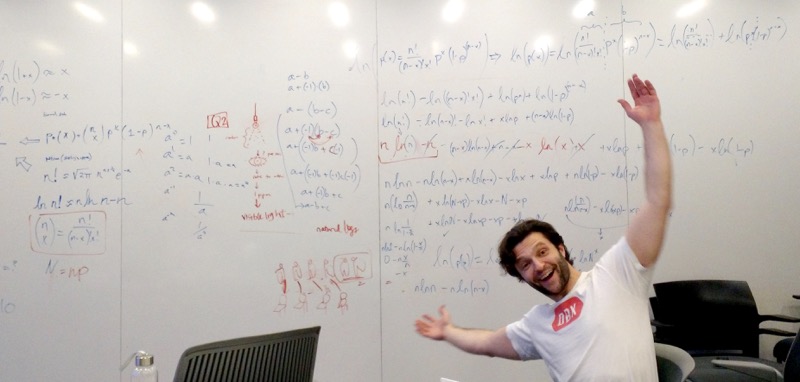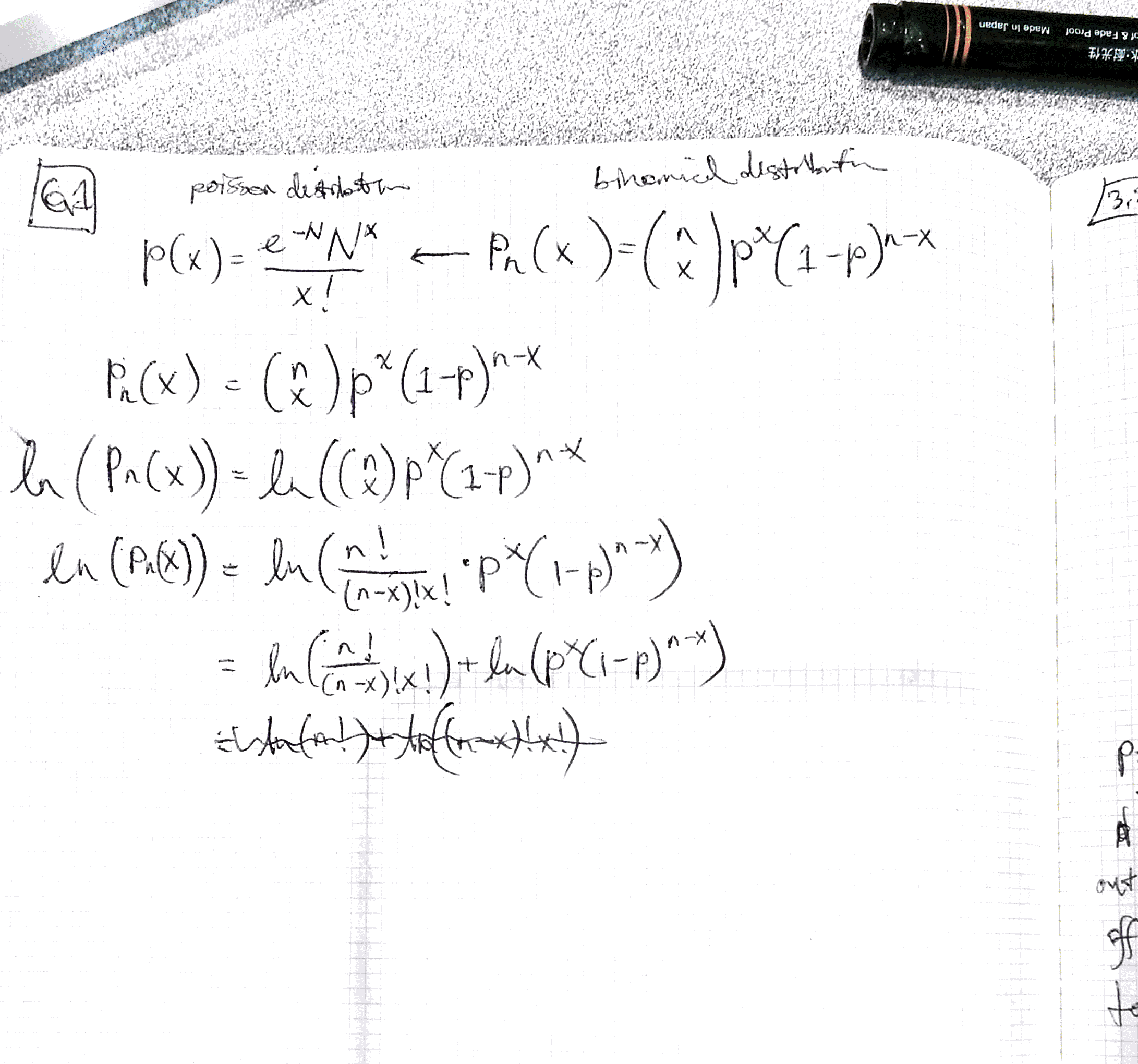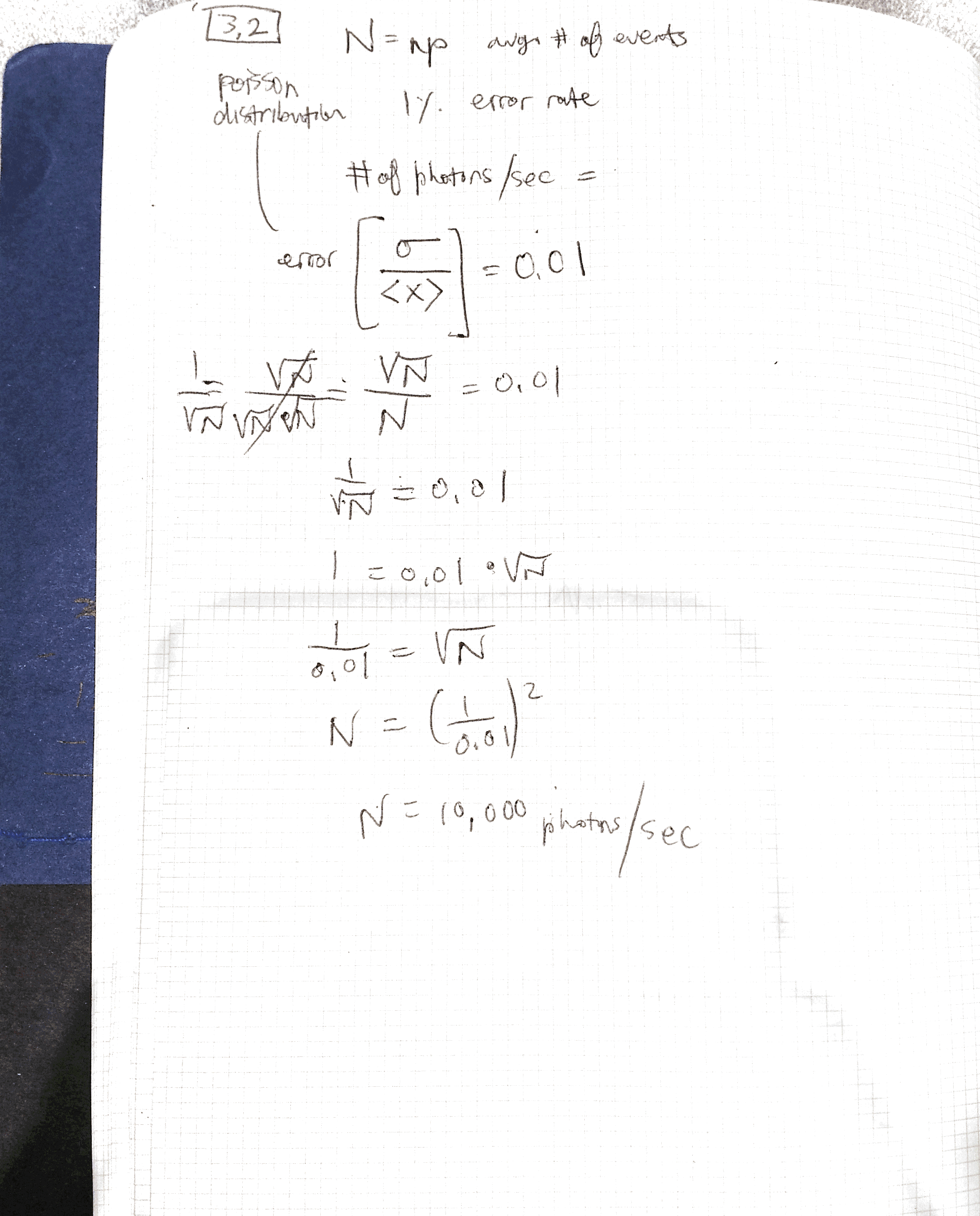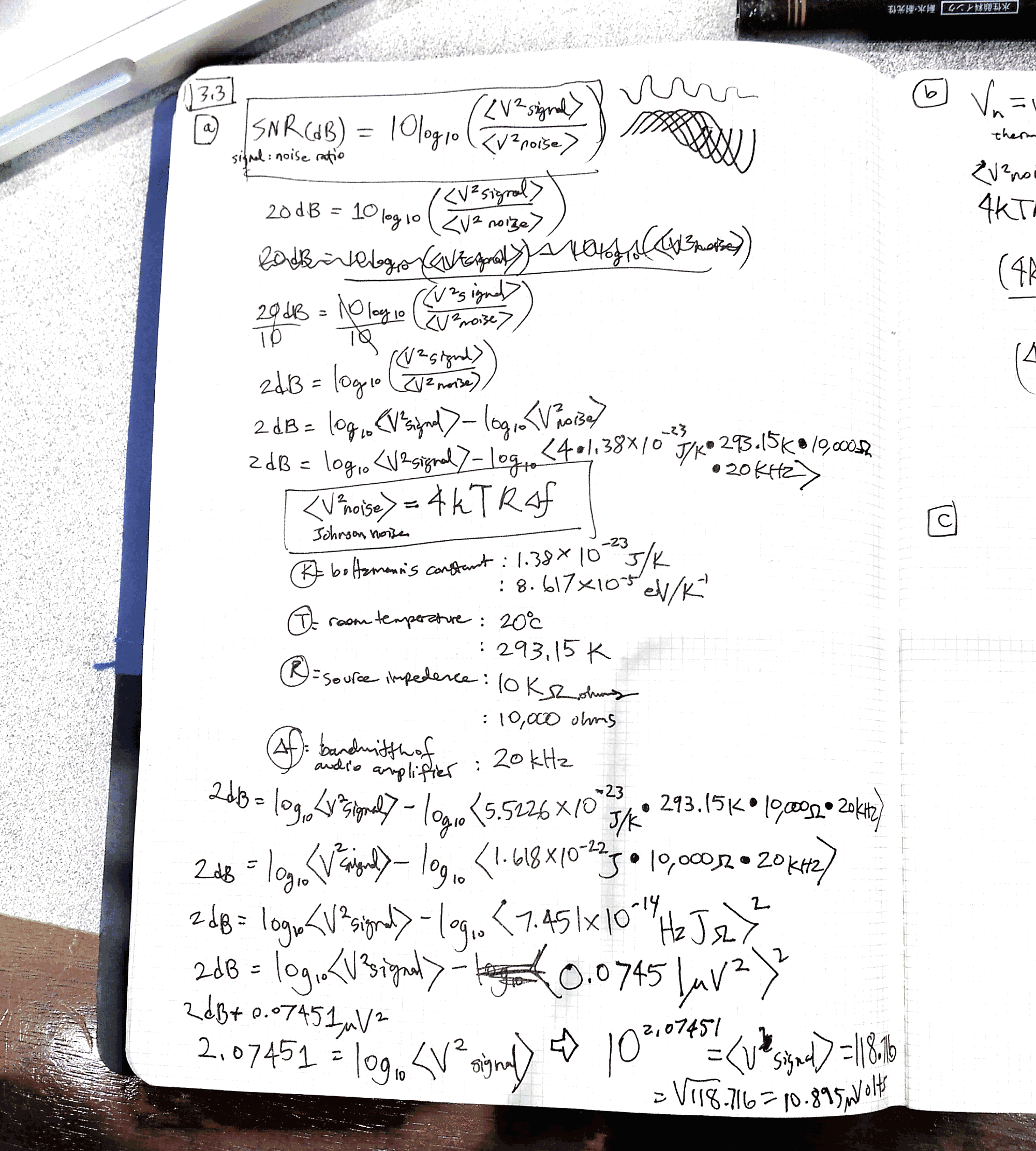This chapter began from random variables such as rain drops or electrons in a wire and how the probability of their distributions can be modeled as stochastic systems with binomial, poisson and gaussian distributions. Binomial distributions involve discrete events (heads or tails). Poisson and gaussian involve continuous events. These distributions describe different types of noise in physical systems. Johnson noise emerge through relaxation of thermal fluctuations in resistors and results in build-up of charges (battery) as energy dissipates. Johnson noise are present in voltage noise. Shot noise are made up of discrete events at far enough from one another that the time is short compared to the time between the arrival of the prior one. Shot noise makes noisy currents. 1/f noise is scale invariant flat distribution which cases a material to fluctuate in its conductivity. 1/f noise results in a material that is conductive and not conductive due to switching noise that occurs. This is seen in noisy currents and the smaller the cross-sectional area, the higher the noise. Finally the chapter relates noise to thermodynamic fluctuations and its relationships to temperature, energy storage, a system's degree of freedom and fluctuation-dissipation.
Recitation Demo
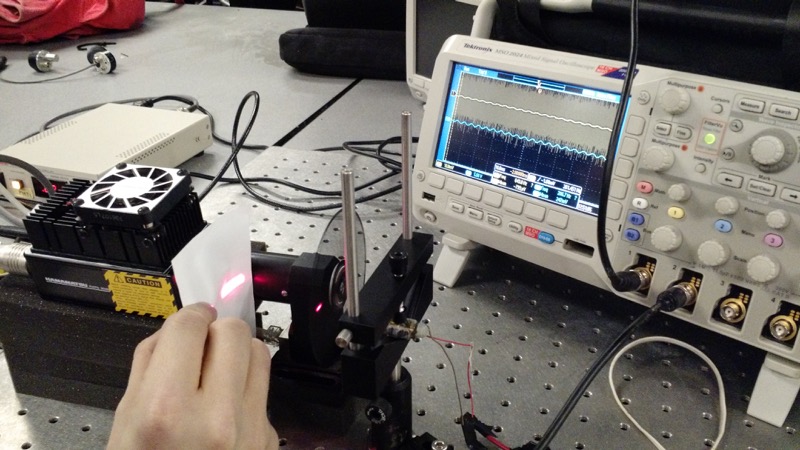
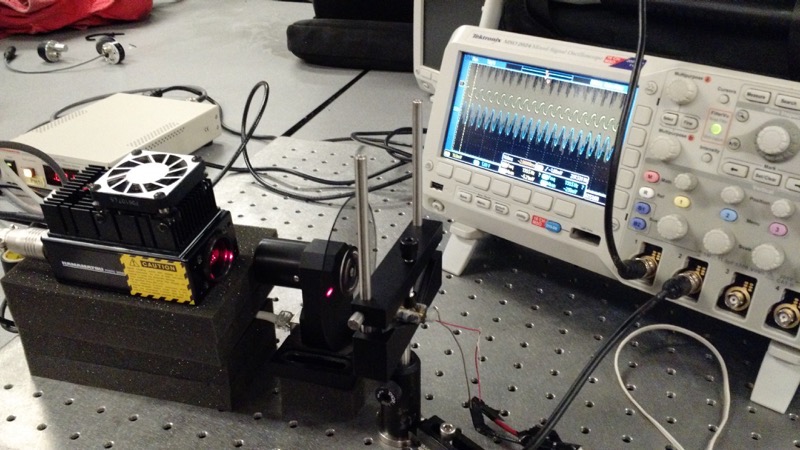
Problem Set #3
